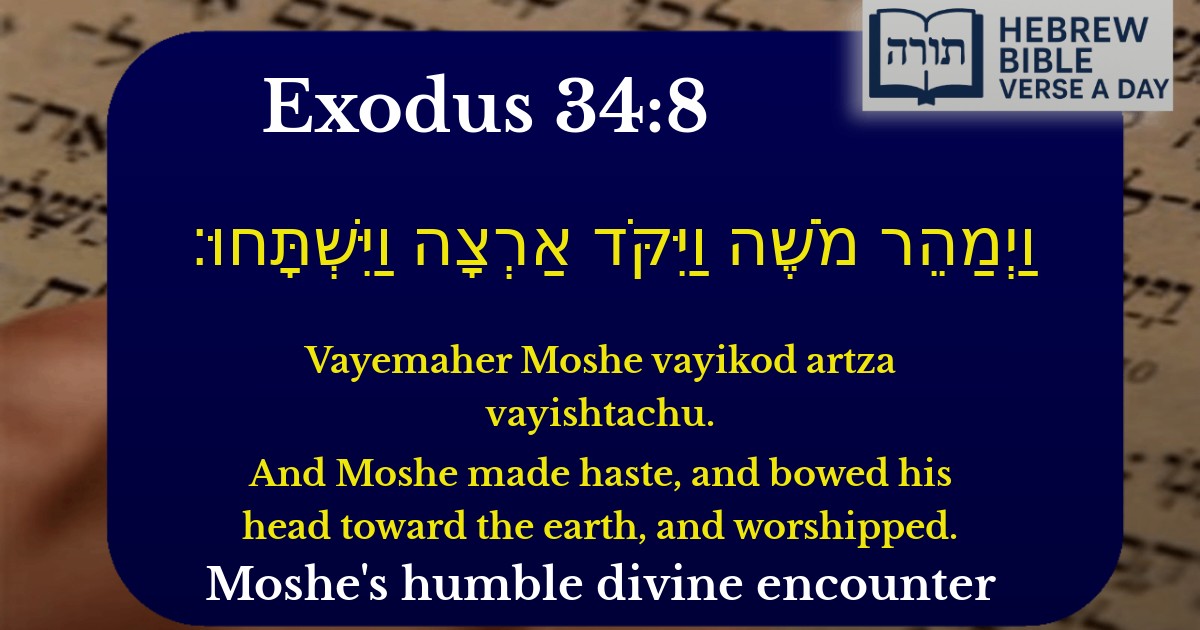Join Our Newsletter To Be Informed When New Videos Are Posted
Join the thousands of fellow Studends who rely on our videos to learn how to read the bible in Hebrew for free!
Hebrew Text
וַיְמַהֵר מֹשֶׁה וַיִּקֹּד אַרְצָה וַיִּשְׁתָּחוּ׃
English Translation
And Moshe made haste, and bowed his head toward the earth, and worshipped.
Transliteration
Vayemaher Moshe vayikod artza vayishtachu.
Hebrew Leining Text
וַיְמַהֵ֖ר מֹשֶׁ֑ה וַיִּקֹּ֥ד אַ֖רְצָה וַיִּשְׁתָּֽחוּ׃
Parasha Commentary
📚 Talmud Citations
This verse is quoted in the Talmud.
📖 Sotah 5a
The verse is cited in a discussion about the humility of Moses, emphasizing his quickness to bow and worship as an example of proper reverence.


Moshe's Immediate Response of Humility
The verse (Shemot 34:8) describes Moshe's swift and profound act of bowing (וַיִּשְׁתָּחוּ) upon hearing Hashem's declaration of the Thirteen Attributes of Mercy. Rashi explains that Moshe's haste (וַיְמַהֵר) demonstrates his deep reverence and eagerness to acknowledge Hashem's greatness. The act of bowing signifies complete submission before the Divine Presence.
The Significance of Bowing
Rambam (Hilchot Tefillah 5:13) teaches that bowing (השתחוואה) is a fundamental expression of humility and awe before Hashem. The Talmud (Berachot 34b) states that Moshe's bowing here set a precedent for proper conduct during prayer, emphasizing the need for physical and mental submission when approaching Hashem.
Moshe as a Model of Humility
The Midrash (Shemot Rabbah 45:6) highlights that Moshe's immediate bowing reflects his exceptional humility, as described in Bamidbar 12:3 ("Now the man Moshe was exceedingly humble"). His action serves as a lesson in recognizing one's place before the Creator, especially after experiencing Divine revelation.
The Context of the Thirteen Attributes
Ibn Ezra notes that Moshe's bowing occurred specifically after hearing the Thirteen Attributes (Shemot 34:6-7), indicating that true understanding of Hashem's mercy should inspire immediate and profound reverence. The Sforno adds that Moshe's response models how one should react to experiencing Divine compassion.
Practical Lessons from the Verse